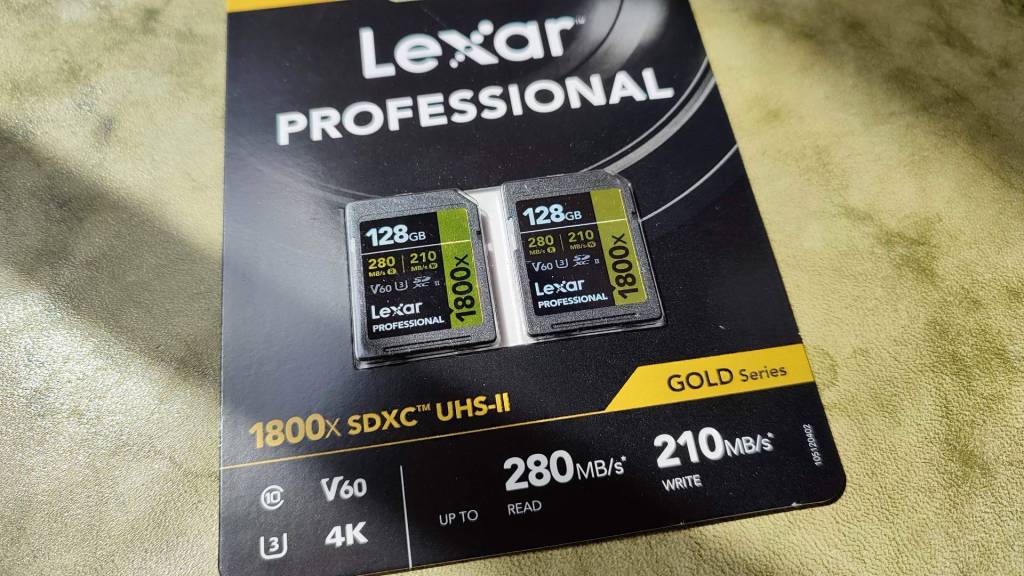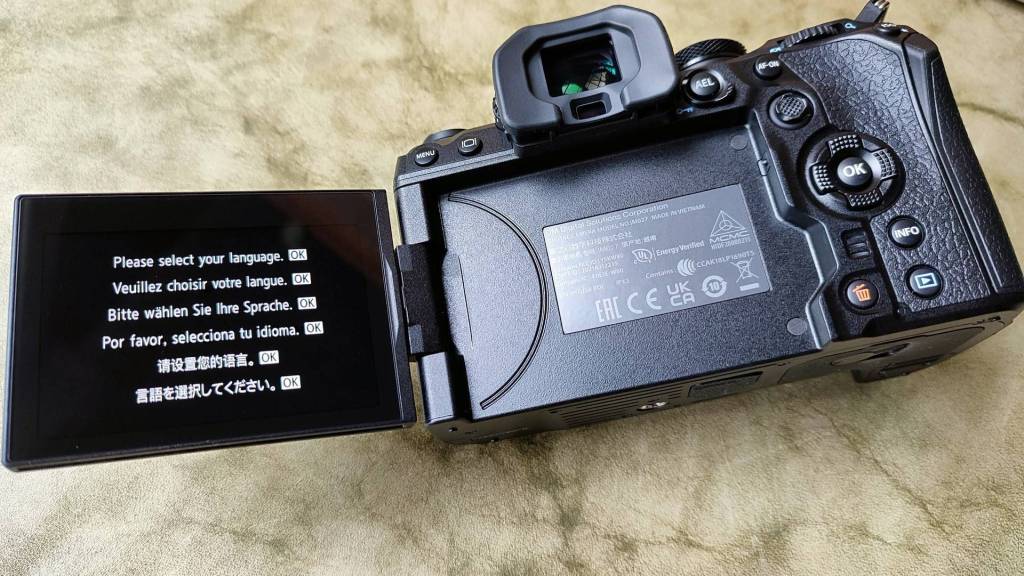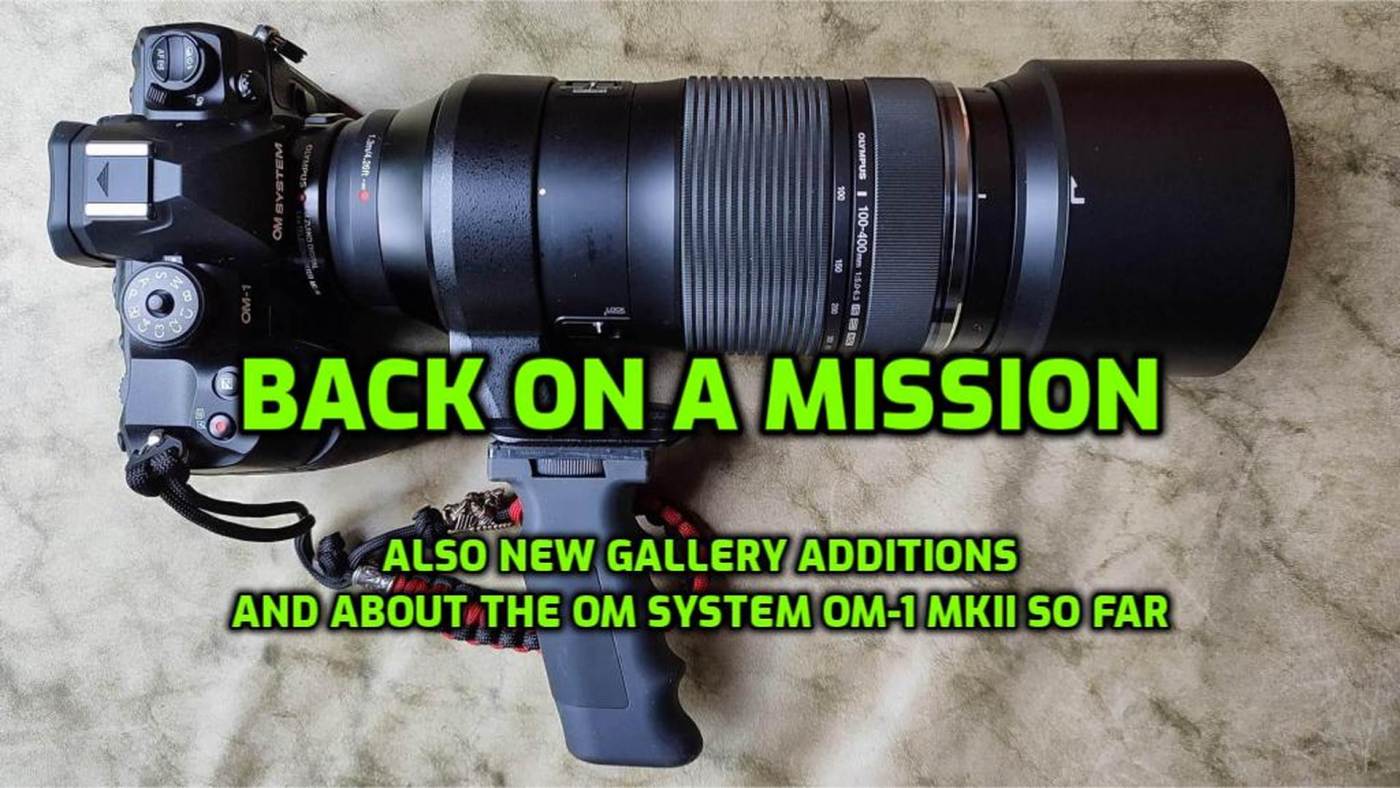Many of you photography enthusiasts likely contemplate new cameras, lenses, or other gear to improve your craft, but may not blog about it. Here at Open Source Photography, I do just that, aiming to share my experiences to help others make informed decisions amidst the uncertainty.
Currently, I have both the Panasonic Leica 100-400mm f4-6.3 and the Olympus 100-400mm f5-6.3 lenses. I initially got the Leica, but it had an issue that has since been resolved. I bought the Olympus due to the Leica problem and because it allows for converters, increasing its reach to 560mm, though with a smaller aperture, from f6.3 @ 400mm, and with MC14 to f9 @ 560mm.
Mission I :
In this new mission, it’s all about the new OM System 150-600mm f5-6.3 lens. Should I buy it? Do I need it? What are the pros and cons? And what should I do with my old 100-400mm lens—keep it or sell it?
There are many reasons to consider when deciding whether to buy a new lens. Cost is a big factor, but even if you have the budget, it’s important to ask yourself if you really need it. Otherwise, it might just end up being another lens that you rarely use.
I’ve put together a table below comparing the four major lenses from Olympus/OM System, including the ones I own, the new 150-600mm lens, and the expensive 150-400mm lens, just to compare their specs.

| Olympus 100-400mm | Olympus 300mm | OM System 150-600mm | OM System 150-400mm |
|---|---|---|---|
| f5-6.3 | f4 | f5-6.3 | f4.5 |
| 200-800 FOV | 600 FOV | 300-1200 FOV | 300-800 FOV |
| 3 axis 3EV | 5 axis 4EV | 5 axis 6EV | 5 axis 4.5EV |
| TC14/20 = 1120/1600 FOV | TC14/20 = 840/1200 FOV | TC14/20 = 1680/2400 FOV | TC1.25 = 1000 FOV |
| Length : 206mm | 227mm | 264mm | 314mm |
| Weight : 1120gr. | 1475gr. | 2065gr. | 1875gr. |
| €1300 | €2800 | €2700 | €7500 |
| own it | own it | buy ? | forget it ! |
Things to Consider :
- The 100-400mm is usable up to and including the MC14, above it is more blurred.
- The 300mm can easily use the MC14 and MC20 and is then in the same range as the 150-600mm
- I would primarily buy the 150-600mm to use without TC
Well, I also looked at some picture results from the two most expensive lenses because the price difference between them is quite significant. Admittedly, the 150-400mm lens delivers exceptional results, but the 150-600mm isn’t far behind. In fact, considering the price difference, I personally find the advantage negligible. Additionally, the 150-600mm has a much greater range. However, if you want the absolute best and have a budget like D. Trump, then a few thousand dollars more or less probably won’t matter.
Comparing the 150-600mm to what I currently have, the combined range and similar light sensitivity make a big difference. The most remarkable feature is probably the incredible image stabilization. When you consider everything, the price is actually reasonable. But for me, the biggest issue is the weight, which is significantly higher. The 100-400mm and the 300mm were just manageable for handheld photography, but anything heavier would cause problems after a while.
The 100-400mm lens delivers relatively good results, and so does the 300mm, which I don’t use enough. The 300mm already has better stabilization and is also slightly sharper, even with teleconverters, putting its range with the MC20 at the same level as the 150-600mm. I also reviewed my own photos to see how often I needed a longer range, and honestly, not that often.
Conclusion :
The 150-600mm lens would be a great choice if I didn’t already have long telephoto lenses. But the fact that I prefer my Leica 100-400mm for its compactness and weight, makes me realize that what I currently have provides sufficient range linked to my physical capabilities. It also made me realize I need to use my 300mm more often.
My advice for other photographers is, if range is an issue, and if money and weight aren’t issues, go for the 150-600mm.
Otherwise, buy the Olympus 100-400mm or the 300mm Pro with teleconverters, and you won’t be dissapointed. Also, consider the Lumix Leica Vario 100-400mm, it is astonishingly small and delivers spectacular results, it is a lens that will never let you down.
Resouces :
https://www.dpreview.com/forums/post/67505309
https://www.sulasula.com/en/category/articles/olympus-gear/
https://www.tesniward.co.uk/the-olympus-150-400mm/
https://smallsensorphotography.com/m-zuiko-150-600-vs-100-400-comparison
Mission II :
The second point is about my new OM-1 MKII and selling my older camera. Actually, I’m a bit conflicted. Since getting my new OM-1 Mark II camera, I initially planned to sell my Olympus E-M1 Mark III. However, after a few days, I’m having second thoughts. I also have a nearly new E-M1X. Even though these two cameras are quite different, I’d like to keep one as a backup to the OM-1. What seemed like a simple decision is turning out to be quite difficult.
The difficulty lies in the fact that while the E-M1X is older, it’s slightly more capable and, in some cases, more pleasant to use than the E-M1 Mark III. Additionally, the E-M1X has bird, airplane, and motorcycle/car recognition features. On the downside, it’s much heavier, and its larger size can sometimes be an advantage, but not always. It’s a real dilemma!
My first thoughts on the OM-1 Mark II :
With this camera, I approached things a bit differently than with my previous ones. Before I even got the camera, I bought a third-party dual battery set with an external charger. At the same time, I also got two new Lexar 128GB 1800 Pro memory cards, so the camera was ready to go as soon as it arrived.
When I first turned it on, I only set up the basics like language and time, and chose both RAW and JPEG for initial testing. I figured I’d adjust other settings later based on my experience using the camera in different situations and then save these settings as four presets.
The camera now has image recognition that works without needing to set up tracking. The autofocus is impressively fast and accurate. I noticed the colors look richer and the sharpness has improved. The camera feels good in my hand, and the slightly larger grip makes it easier to handle than the E-M1 MKIII, especially with longer telephoto lenses. It also has a nice, large viewfinder. However, I have mixed feelings about the command wheels. The ones on the E-M1 felt sturdier—it’s hard to explain, but the new ones seem a bit fragile. And what about dust or water that can get into the gaps between the slot and the wheel ? I also noticed it uses more power, possibly because of my settings and frequent use of image recognition. I need to look into this further.
Since I like to keep my cameras in great condition, I got a screen protector for the LCD. However, even though the protector was very thin, it made it difficult or almost impossible to close the screen properly. For now, I’m keeping the screen closed with the LCD side facing up—something to keep in mind.
Overall, my first impressions of this camera are very positive. I’m glad I went for it, even though it’s quite expensive—the original OM-1 is currently €1000 cheaper, which is significant. Plus, my E-M1 MKIII was practically new with only 1600 shots.
However, the mind-blowing bird/animal recognition and the super fast AF make the camera so much better than the E-M1 Mark III that it is a no brainer. I just love it!
Unless you already have the original OM-1, Upgrade !


The article about the Spitfire, my most viewed video on YouTube !
The New OM-1 Mark II in action, the Lumix Leica Vario 100-400mm still my number 1.
This article was written by Marc R.
While I primarily speak Dutch and have some knowledge of English and a little French, ChatGPT helps ensure my writing is grammatically correct. I often mix Dutch and English in my drafts, and ChatGPT steps in to translate and correct.

The photo gallery of Open Source Photography, Olympus micro 4/3 system, Vintage Lens Photograpy, Film Simulation, PictureFX, HDR – Photographer : Marc R.
Discover more from Open Source Photography
Subscribe to get the latest posts sent to your email.




I actually managed to read all this post despite my myopia and astigmatism and my first thought was, you must be a professional photographer or earn money through your photograph to make such high-end purchases?
As an amateur who now uses my Sigma 150-500mm lens less as I don’t go for nature walks in the last couple of years, I felt this lens was just fine.
Surprisingly, when I bought it, I found the heavy weight actually steadied my hand-held shots, not weighed them down.
I can’t use a small point & shoot camera since I bought the 150-500mm lens as it’s too light and I can’t hold it steady enough. LOL
As to keeping all those lenses, well, you can’t use them all so maybe it’s time to sell a couple.
LikeLiked by 2 people
Hello Vicki,
Well, I’m not a professional photographer,
I was an IT professional, but today i’am retired.
As for lenses, I would never buy the most expensive one – spending €7500 on a lens is a bit over the top, but the 150-600mm does make me hesitate.
Currently I have three telephoto lenses, and each has its special purpose,
So I probably will keep them, but the comparisons have made me realize that I should use one of them more. And then I don’t actually have to buy the 150-600mm.
Thanks for reading, and take care !
LikeLike
Merci Marc pour ces impressions sur le choix des objectifs à grossissement très élevés de haute gamme en MFT et sur vos différents boitiers Olympus/OM System. Je ne doute aucunement que les nouvelles technologies et les nouveaux algorithmes embarqués soient plus performants, cependant et plus particulièrement chez Fujifilm pour ne citer que ce manufacturier, la construction de ces nouveaux modèles me semble de plus en plus légère d’ou cette confiance plus réduite en regard de la longévité du nouvel équipement. Fabulation ou non, seul l’expérience à long terme pourra trancher vraisemblablement.
Bonne continuation et c’est toujours un plaisir de vous lire, Daniel M
LikeLiked by 1 person
Bonjour Daniel,
Cette fois, j’ai eu de l’aide de ChatGPT pour la traduction du néerlandais vers le français, j’espère que la traduction est correcte.
Je suis très heureux que vous aimiez lire mes articles.
J’espère seulement que cela aide réellement quelqu’un, car c’est mon seul objectif.
Le fait que la qualité de fabrication laisse parfois à désirer dans les appareils photo de nos jours est effectivement quelque chose de notre époque. D’un autre côté, la technologie se développe si rapidement de nos jours que votre appareil photo ne sera probablement utilisé que pendant environ cinq ans de toute façon. Et maintenant que l’IA a fait son apparition, nous pouvons probablement nous attendre à quelques innovations.
J’espère juste être là assez longtemps pour en voir certaines.
Tous mes vœux à vous, Daniel, et à la prochaine fois ! Marc R.
LikeLiked by 1 person
Thoughtful article, nice supporting information too. From my perspective, having used all the Sigma lens and now the Leica 100-400 the weight on the big lens is too limiting. Shooting wildlife in tropical/semi-tropical areas now with the OM-1 and 100-400 is so much easier. I’ve never used the Olympus 300 prime, however it sounds pretty good for stationary subjects.
Always enjoy your in-depth articles, certainly helped me make a move to Olympus. Thanks again.
LikeLiked by 1 person
It’s always encouraging to know my efforts are appreciated, Ted, thanks !
The concept of micro 4/3 systems is to provide a smaller and lighter setups for bird and wildlife photography, yet, the OM System/Sigma lens goes against this principle. Additionally, I’ve also experienced issues with my back and wrists, so I think I will pass for it. The 300mm lens is excellent, but being a prime lens, it comes with certain drawbacks. Wishing you all the best from Belgium !
LikeLiked by 1 person
Thanks and regards from the Lowcountry (US version)
LikeLiked by 1 person